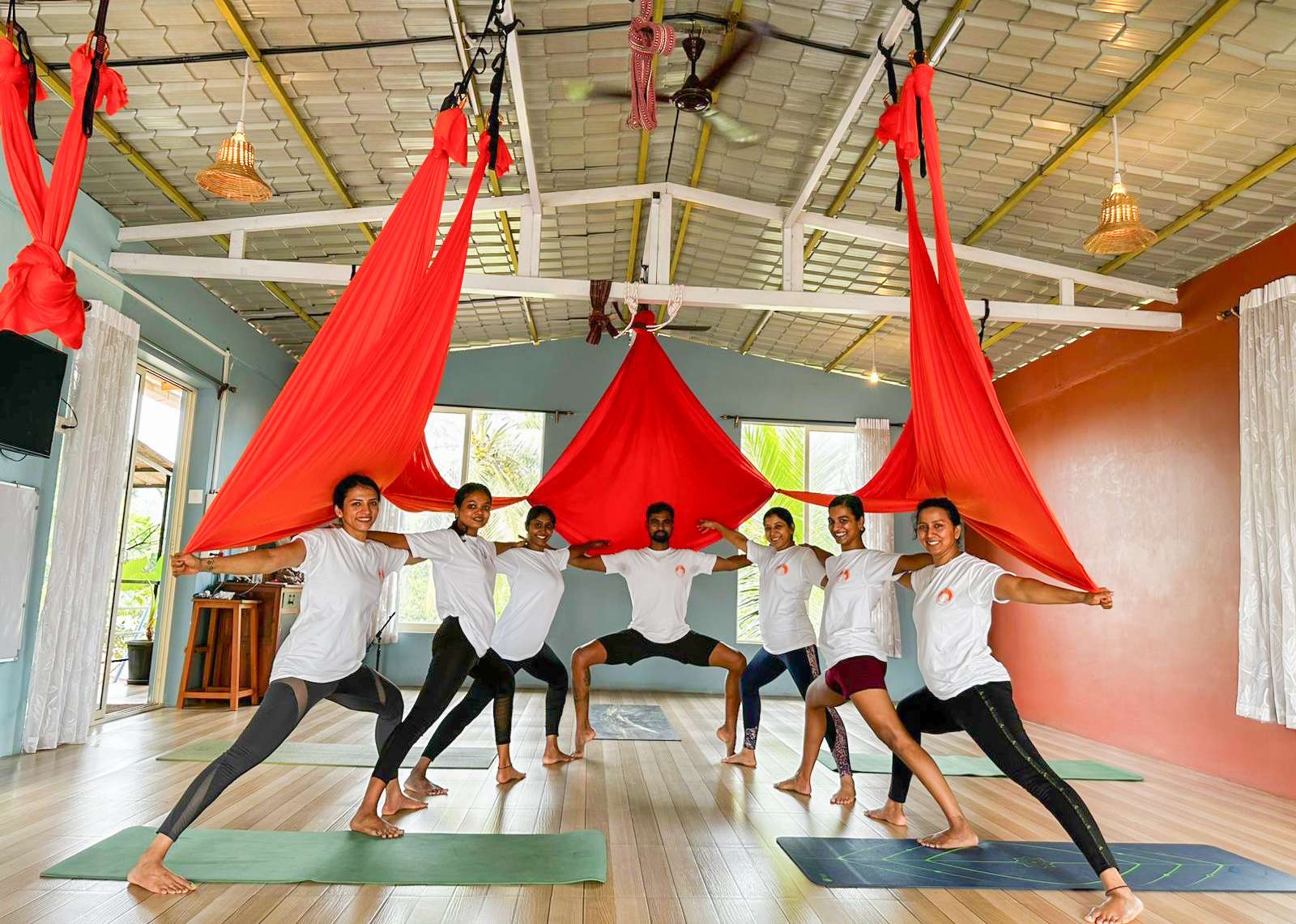Virabhadrasana dwe (Warrior two)
The name comes from the Sanskrit, “Vira” meaning “warrior” and “bhadra ,” meaning “ferocious ” and “Asana”, meaning “Posture”.
Table of Contents
- Steps with breathing
- Adjustments
- Benefits
- Contra Indications
- Variations
Steps with breathing
1.Stand erect in “taadasana” hands on the waist.
2.Take a deep inhalation and spread the legs apart sideways 4 to 4 & half feet.
3.Turn the right foot right side and keeping the left heel firmly on the ground and leg stretched out completely, arms in line with the shoulder, palms facing down.
5.Exhale and bend the right knee tilt the right thigh parallel to the floor, right knee perpendicular to the floor, thus forming a right angle between the right thigh and right calf and gaze at the right middle finger.
6.Stay in the pose from 30 seconds to 1 minute with deep breathing. Inhale and come up. Turn the left foot and continue on the left side.
7.After completing on both the sides relax in shithala taadasana.
Adjustments
1. Front knee should not cross the toes and make the 90 degree angle.
2. Thigh should be parallel to the floor.
3. Arms should be in line with the shoulders, away from the ears.
4. Core should be engaged.
5. Front heel should be in line with heel behind or it can be in line with the centre of the behind foot.
6. Weight of the body should be evenly distributed on both the legs.
Variations
1. Bend the legs first and then extend the arms.
2. Extend the arms first and then bend the knees.
3. Only bending of the legs, with hands on the waist. ( in case of pain in hands and shoulders)
Benefits
1. Stretches the chest, lungs and shoulders.
2. Strengthens ankles, knees and thighs.
3. Stimulates the abdominal organs.
4. Develops balance and stability.
Contra Indications
1. This asana is strictly prohibited for the people with injuries in the knees, hips, spine, shoulders and ankles
2. High/ low blood pressure
3. Diarrhoea



